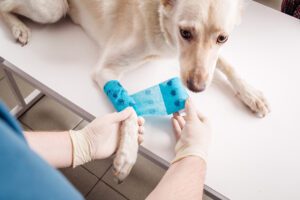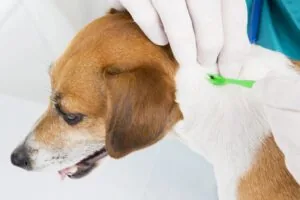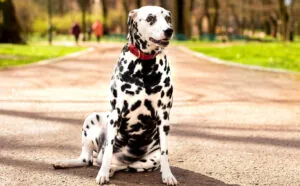Pet Shedding
Shedding is a natural, healthy way cats and dogs renew their fur, but loose fur is not always welcome to pet owners – particularly when it seems to get everywhere and into everything. Cats and dogs that are indoors most of the time will shed more lightly and regularly throughout the year because their temperature and light are controlled. But if your cat or dog spends most of his or her time outdoors, you’ll likely notice quite a bit more shedding each season. In this article, we’ll talk about tips that can help you reduce your pet’s shedding.
Good Brushing
The fastest, simplest way to reduce shedding is with good, regular brushing. Use the proper type of brush for your pet’s coat texture and length, and brush them at least 3-4 times a week when the shedding is worst. Daily brushing is best and will continually remove loose, broken or damaged hair as well as distribute natural oils to keep your pet’s coat in peak condition.
Keep Them Cool
Dogs and cats tend to shed more frequently when they’re hot than they do when they’re cold. This is because they instinctively begin to lose some of their coats to help them stay cool in hotter months. By keeping your pets cool as much as possible, you can help them reduce their sheds. However, keep in mind that they will probably not stop shedding completely, even if you keep it very cold in your household.
Good Nutrition
A high-quality, balanced diet rich in protein will keep your pet’s fur in top shape and reduce shedding from brittle, loose hair. Adding a teaspoon of flaxseed oil or olive oil to your pet’s food once a day will provide good Omega-3 vitamins to improve their coat.
Skin Care
If skin is dry, itchy or irritated, pets will scratch more and pull more fur out for shedding. Consult a veterinarian for a skin evaluation, and adjust your pet’s diet to meet their nutritional needs for strong, healthy, supple skin. Pets with severe allergies or fleas will also itch more and therefore shed more, so controlling those conditions is essential for good skin care and less shedding.
Proper Hydration
If a pet is dehydrated, their fur will be more brittle and will break and fall out more easily. Always provide your cats and dogs with adequate fresh, clean drinking water, and add wet food to their diet to increase their hydration. Flavor your pet’s water with a bit of low-sodium broth to encourage them to drink more.
Keep Up with Vet Checkups
Keeping up with regular veterinarian check ups can make it easier for you to tell when there’s something wrong with your pet. If your pet is sick or has a skin condition, for example, your regular vet visits will give you a chance to bring up any concerns with the vet and figure out the underlying causes of the issues before they worsen.
Shave as Needed
Some dogs and cats may need to be shaved, especially during the summer months. Shaving is not a perfect solution for shedding, since dogs who are shaved will still shed and may also be at risk for sunburn, overheating, and other issues. However, shaving your dog can be a good step during the summertime. Ask your vet for more information if you’ve never shaved your dog before and if you want to try it. If you don’t think you can handle the experience yourself, take your pet to the groomer for a shave instead.
Stay a Healthy Weight
Finally, keep your pet at a healthy weight to cut back on shedding a little bit. Shedding can sometimes be related to obesity and diabetes in pets. By keeping your pet at a healthy weight and making sure they exercise often enough, you can give them the best possible chance at staying healthy without shedding too much, too. If your pet is already overweight, talk to your vet about a diet and exercise routine that will work for them. This way, you can help them get back to a healthier size in a shorter amount of time.
How to Keep Your House Clean
There are many options for cleaning up any pet hair in your home. To protect couches, chairs, and beds, throw blankets can catch stray hairs. The ultimate tool to remove shedding is a vacuum that works on wood, tiles, and carpet. Use any attachments to clean cushions, or any dust-and-hair collecting areas of your home. For wood or tiled flooring, a regular or dusting broom will pick up unwanted hair. Use a wet paper towel to help pick up the loose hair. Lint rollers work well to remove hair from clothing and curtains. Also, good air filters in the home will help trap hair particles that get into the air. This not only helps keep your house cleaner, but it can also be a great benefit to anyone with allergies that might enter your home.
If your pet shows signs of irregular, excessive shedding, such as losing clumps of fur, developing bald patches, or showing skin rashes or sores, see your vet immediately to check for more serious skin conditions and health issues.
As you can see, there are a lot of things to keep in mind when it comes to reducing your pet’s shedding. However, with the right plan of action, you should be able to reduce the shedding you see!
Share This Post
Recent Posts
About Shallowford Animal Hospital
Shallowford Animal Hospital and The Pet Spa at Shallowford are dedicated to the exceptional, compassionate care your pet deserves. Pets hold a very special place in our families, and we treat yours like our own.



